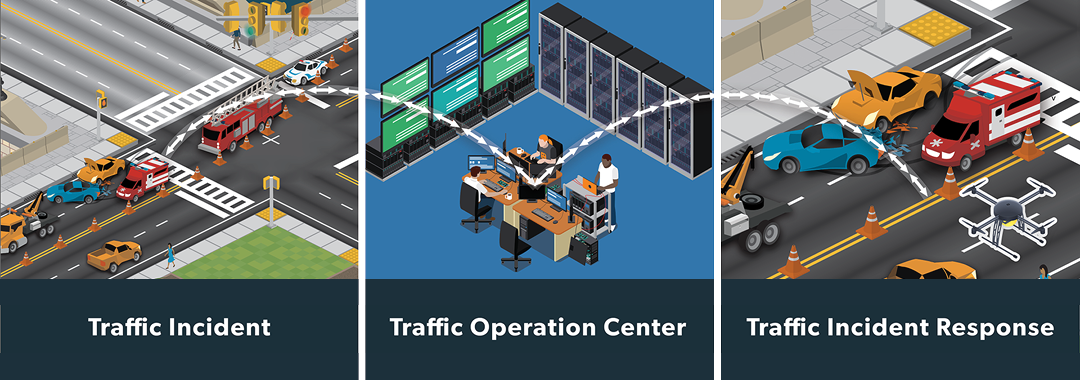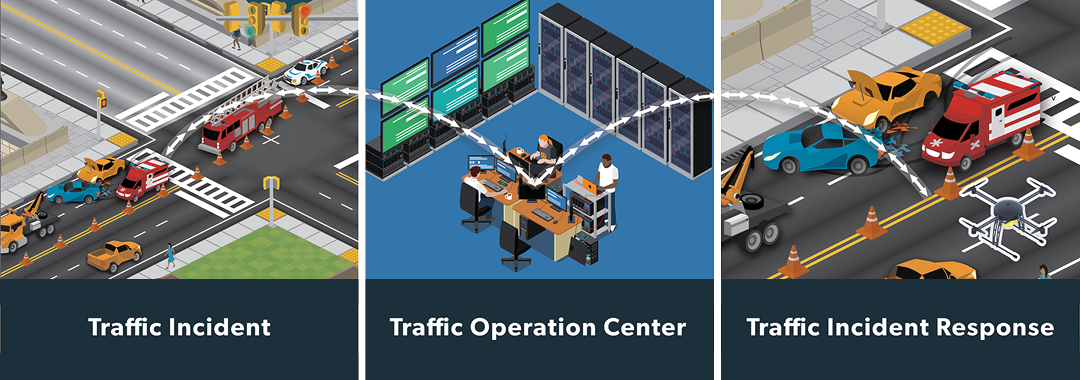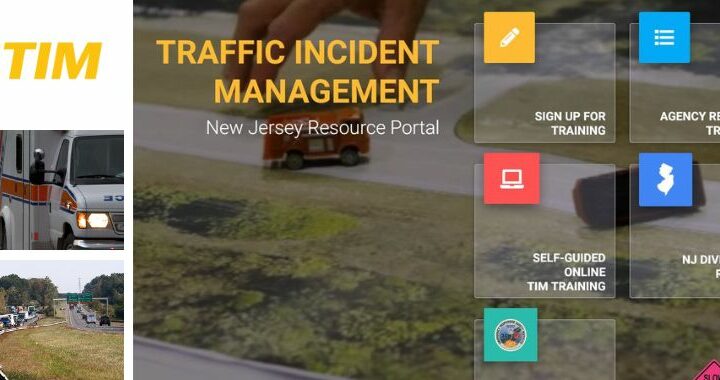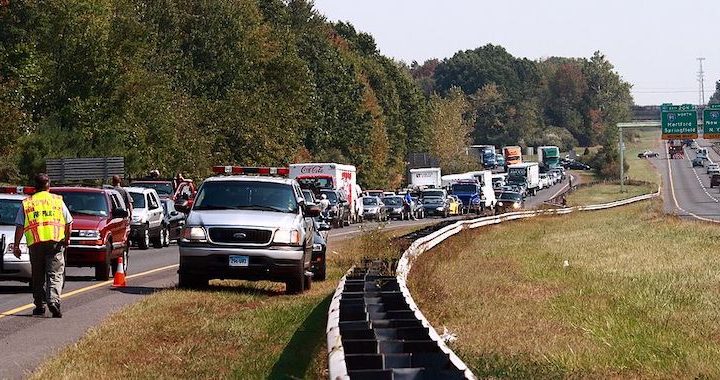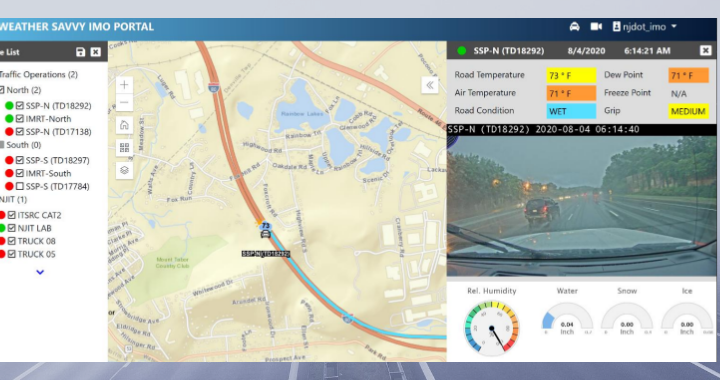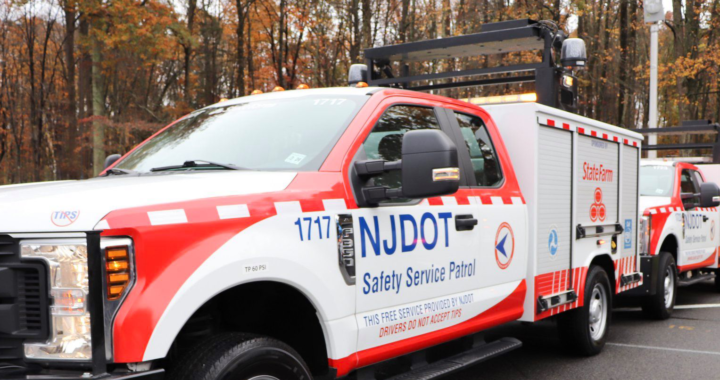What is Next-Generation TIM: Integrating Technology, Data, and Training?
New methods for improving Traffic Incident Management (TIM) programs aim to increase traveler and responder safety and improve trip reliability and commerce movement on all roadways.
Over 6 million reportable crashes occur every year in the United States. Each crash places responders and motorists at risk of secondary crashes while having a severe impact on congestion. New tools, data, and training mechanisms can be used to improve safety and reduce clearance times at roadway crashes. New and existing TIM programs, including those for local agencies and off-interstate applications, will benefit from using enhanced TIM practices on all roadways to save lives, time, and money.
A New Generation of TIM
While the FHWA's national TIM responder training program successfully trained almost 500,000 responders to clear incidents collaboratively, safely, and quickly, it was largely focused on agencies that respond on interstates and high-speed roadways. Next-generation (NextGen) TIM increases the focus on local agency TIM programs while integrating new and emerging technology, tools, and training to improve incident detection and reduce safety response and clearance times on all roadways.
Traditionally, transportation agencies capture incidents (crashes, roadway debris, stalled vehicles on mainlines, etc.) where sensor technologies are installed, where safety service patrols are present, or when contacted by public safety/law enforcement agencies. NextGen TIM significantly expands this capacity. It enables agencies to improve TIM strategies by implementing new options such as back-of-queue warning, navigation-app notification of active responders in the vicinity, notification-based incident detection using crowdsourced data, and more.
By using NextGen TIM methods, State and local agencies can increase traveler and responder safety, improve trip reliability and commerce movement, and enable responder communities to focus more resources on other pressing citizen needs.
Benefits
Increased Safety. NextGen TIM targets advances in safety through engineering, enforcement, education, and emergency services to help keep responders, drivers, and pedestrians safe across freeway, arterial, and multimodal travel.
Improved Travel Times. Training, data, and technology combine to help local and State agencies reduce secondary crashes and clearance times, improving trip reliability and increasing motorists' awareness of active responders along their travel routes.
Improved Operations. Integrating new and emerging technology, tools, and training can improve incident mitigation and safety throughout the whole TIM timeline, from incident detection to clearance on all roadways.
Learn more about this EDC-6 Innovation.
How NJ Incorporates NextGen Traffic Incident Management (TIM)

Stage of Innovation:
DEVELOPMENT
(December 2022)
Research. NJDOT is coordinating with State Police to determine communications that will be shared with Computer-Aided Dispatch (CAD) integration. NJDOT is also working to establish radio channels to enable coordinated DOT and law enforcement communications at incident sites.
Training. NJDOT is actively working towards achieving participation by all local agencies in the NJDOT established statewide TIM training course.
Building Support. DVRPC area-generated incident management task forces can serve as models for creation of similar diverse stakeholder task forces in other regions. NJDOT is also looking to build partnerships with media to facilitate TIM communications.
What’s Next?
For the EDC-6 initiative, the NJDOT initially wanted to focus on CAD integration as one of the major activities in support of the TIM strategic plan. As a result of NJ State Police's decision to change their CAD technology, the NJDOT is revising their approach for EDC-6 NextGen TIM.
NJDOT is continuing to coordinate with the NJIT ITS Resource Center to deploy HAAS Alert technology on NJDOT's Safety Service Patrol vehicles. The responder-to-vehicle alert application will deliver incident alerts to the motorists (i.e. phone apps) for their situational awareness when approaching a stopped SSP vehicle assisting stranded motorists to assist in reducing speed and collision.
The NJSP statewide CAD system (Motorola FLEX) is currently being re-evaluated. The NJDOT will continue to maintain the existing working group/team comprising staff from the Mobility Operations, Mobility Planning/Research, and NJIT ITS Resource Center to provide coordination and strategic planning for the CAD integration project.
Next-Generation TIM: Integrating Technology, Data, and Training: NEW & NOTEWORTHY

